The White is a stable pattern in originator Rasmus Hansen's coastal sea trout flybox, He uses it as a provocation (read: attractor) or as a shrimp imitation, and prefers it for turbulent water and autumn fishing. The fly is simple, one color only, and one of these universal flies that can catch anything.
The White was originally tied by Danish angler Rasmus Hansen. Rasmus earned the nickname "The Fork" in my circle of anglers because he once wrote an article about turning fork handles into lures for spinning.
These days Rasmus is almost exclusively a fly angler, mostly known for his pike fishing and his trips to Lapland in Northern Sweden. But he does often fish the coast for sea trout, and I personally meet him now and again when I roam the Northern coast of the Island I live on.
He also used to write for the same Danish angling magazine that I do, and we have met on many an editorial summit - often memorable because of the good company and the fishing, but of course also for slight dozes of serious editorial work - but that's a whole other story.
Rasmus himself tells the story about The White - or The White One as he calls it - on his home page. The fly stems from 1993 and has since been refined and forked out to other patterns, but the original tie is still a stable pattern in Rasmus' flybox, He uses it as a provocation (read: attractor) or as a shrimp imitation, and prefers it for turbulent water and autumn fishing.
The flies on this page are tied by Ken Bonde Larsen except for the one with eyes, which was done by Kasper Mühbach.
|
|
|
|
|
|
|
|
|
|
|
|
|
|
|
|
|
|
|
|
|
|
|
|
|
|
|
|
- Log in to post comments

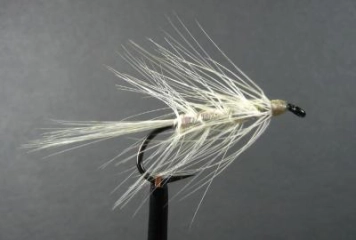
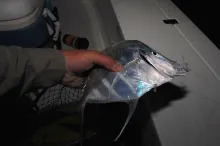
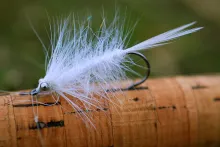
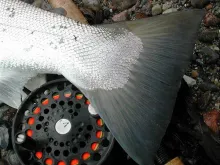

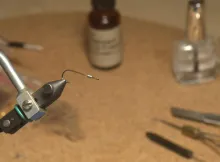
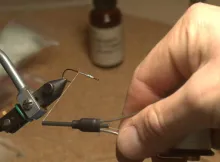
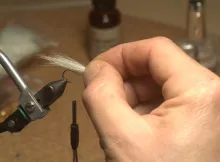
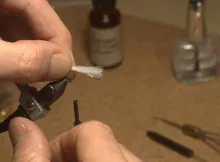
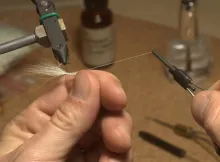
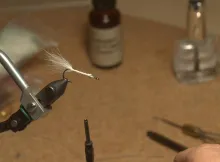
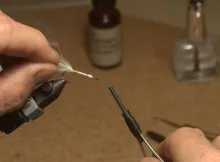
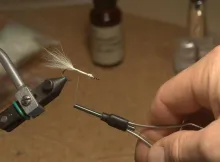
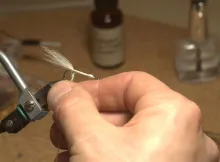

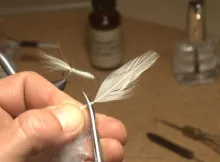
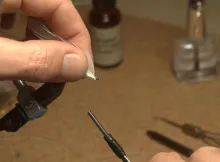
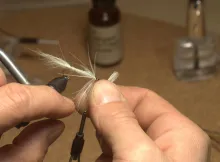
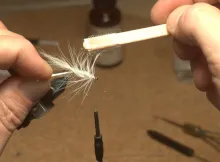
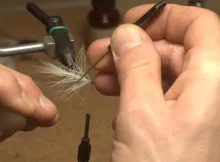
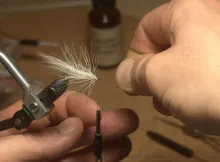
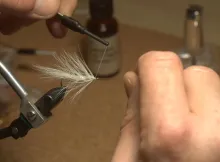
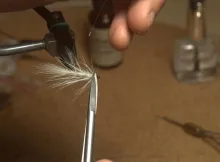
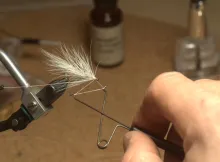
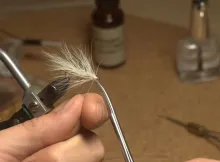
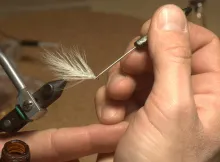
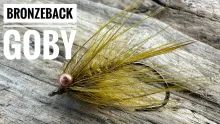
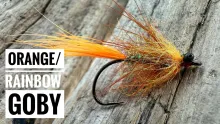

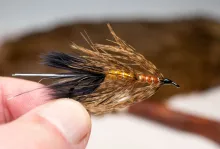
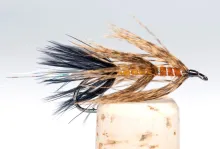
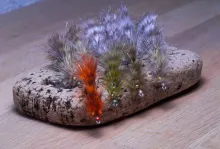

February 2011
Simpl
February 2011
Simplicity is the second most appealing thing about this fly. The first is obvious: it should appeal to virtually any species. It's thrifty, too, a great use for hackle feathers that don't match each other as wings and tails.
Witz,
It would be
Witz,
It would be easier, yes, but t would also remove the function of the rib, which is to secure the hackle and keep it from breaking. And should it break (to fish' teeth), the rib will keep it in place for a while.
Martin
Wouldn't it be easie
Wouldn't it be easier/simpler to tie in the mono ribbing before palmering the hackle, rather than afterward? If I'm wrong, why?
I saw a similar patt
I saw a similar pattern in a book about Irish sea trout fishing back in the seventies. the first year or two i tied in the tail and body, however just winding a hackle tied by the butt forward to the eye (over the thread base) gives the same profile. i've tried several colors, my favorite is a dark dun, though white and black work well also. i tie them on #12 dry fly hooks. if i was restricted to a single pattern this would be it. the pattern has taken just about every species of fish i've run into. without weight it fishes dry or wet. it really is an amazing pattern.
You could tie this i
You could tie this in different sizes to suit the location and the shy fish refusing a larger version. Just go down a size a size and see what happens. Start with Say a size 12 or 10 to start with. I am in Ireland. It would be great lake fly to fish for Brown Trout as it has a bushy appearance like the Irish Lake flies. I would fish it on a sunk leader or tippet.and retrieve it slow and steady.
Hey Martin
I'm prou
Hey Martin
I'm proud to see that you have taken my simple but effective pattern "The White" into your collection of seatrout patterns. It really is an effective fly, and I still use it as my "first choice". Lots of flyfishers has been really sceptical to this pattern, I think mainly because it is so simple and easy to tie. For rough conditions I put a lot of weight under the dubbing. A "turbo" version with some flash (for example som flashabou tube) tied as a collar works fine too. The strange thing is that the fly often works best in larger sizes and taken in very slowly. On the right day it's a real Killer, I've often experienced loads of takes when other flies didn't produce anything, stangely enough...
Thanks
Rasmus Hansen